Dr. Phil Zeltzman’s Blog
10 deadly sins of untreated ACL tears
Pet owners sometimes ask what would happen if we didn’t address a torn anterior cruciate ligament (ACL). Dr. Google and random people will suggest conservative treatment as a perfectly valid option.
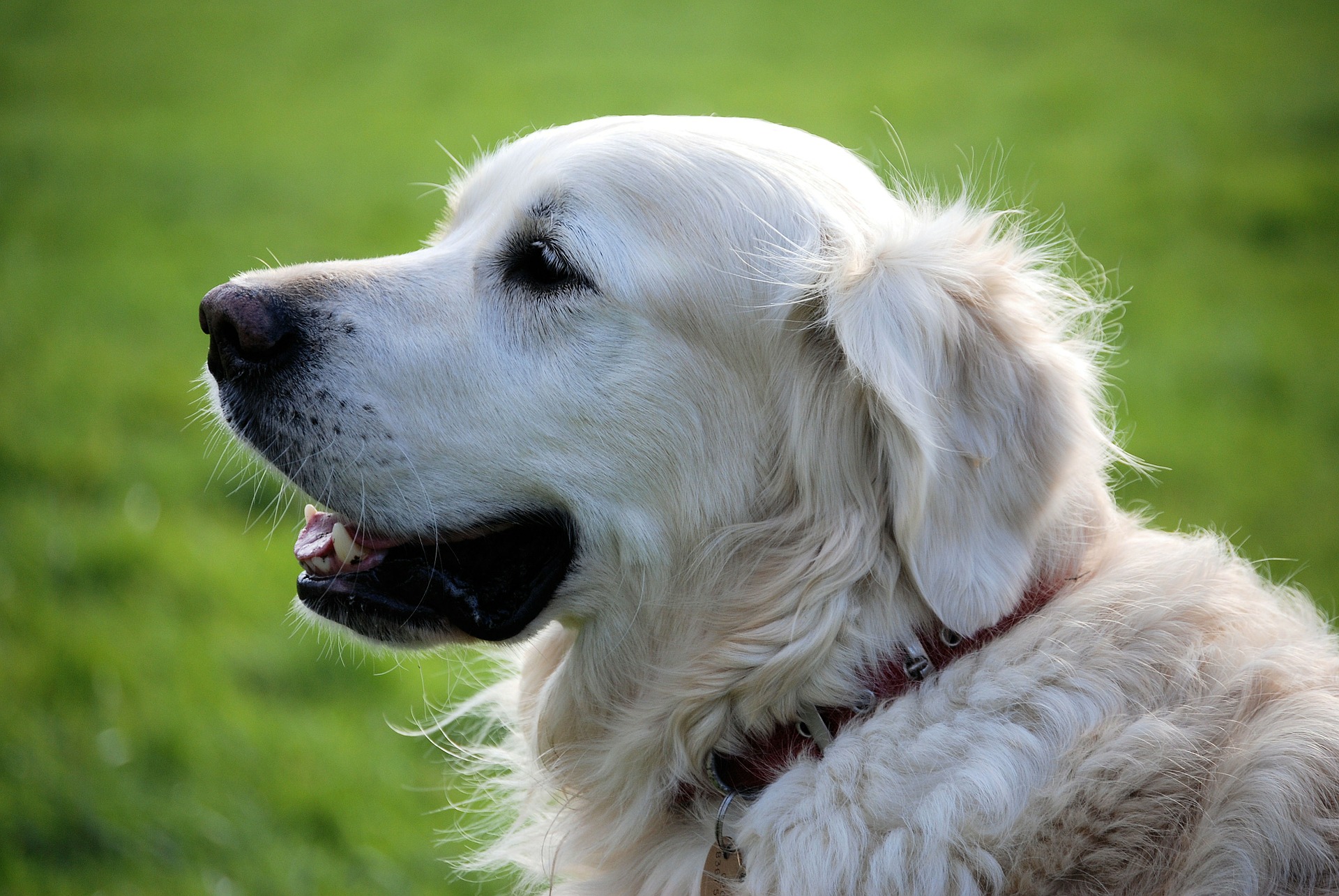
A non-surgeon colleague even wrote elsewhere that since people often don’t need surgery for an ACL tear, then we shouldn’t need it in dogs. Respectfully, this shows a basic misunderstanding of the differences in functional anatomy between dogs and humans. Let’s mention two:
. Humans are straight legged. Dogs always have their knees flexed when standing.
. The human tibial plateau angle is somewhere around 7 degrees. Dogs’ tibial plateau angles vary from around 20 to over 60 degrees, with a back-of-the-envelope average of 24 to 28 degrees in most of my tibial plateau leveling osteotomy (TPLO) patients.
How many reasonable, objective, ethical, honest reasons can you find to recommend conservative treatment as opposed to surgery?
Here are 10 consequences of untreated ACL tears:
1. Pain
Patients with a torn ACL are in pain.
Please remember that limping or favoring or babying a leg = pain.
Pets are not crazy! Holding the affected leg up or limping hurts less than putting full weight on the leg.
When the tear becomes older, pain might subside to some degree, but it stills hurts.
Another reason patients are limping is because the knee is unstable or wobbly.
2. Arthritis
We routinely notice during surgery that patients with long-standing (chronic) ACL tears have more arthritis than patients with a recent injury. This, in turn, leads to pain.
Patients with partial tears typically have less arthritis than patients with complete tears. Recent tears also regularly lead to less arthritis than older (chronic) tears.
Therefore, the sooner we perform the surgery, the better for the patient.
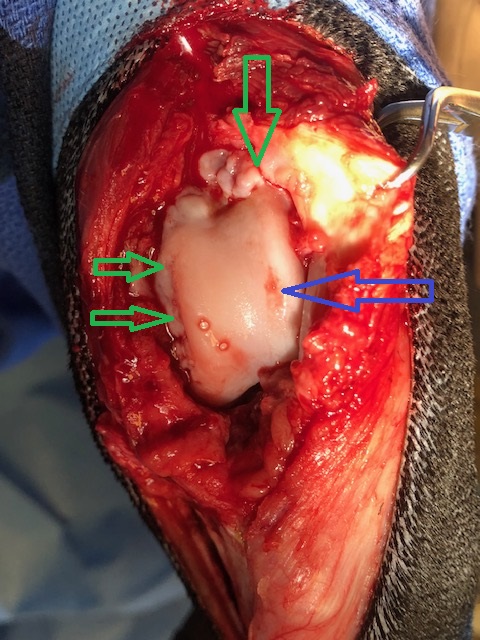
3. Scar tissue
Scar tissue is what we rely on after conservative treatment for an ACL tear. Experience proves that scar tissue alone is not enough to provide good function, at least in medium- and large-breed dogs.
Scar tissue is manifested by what we call the “medial buttress,” which can be a very prominent bulge inside a pet’s knee.
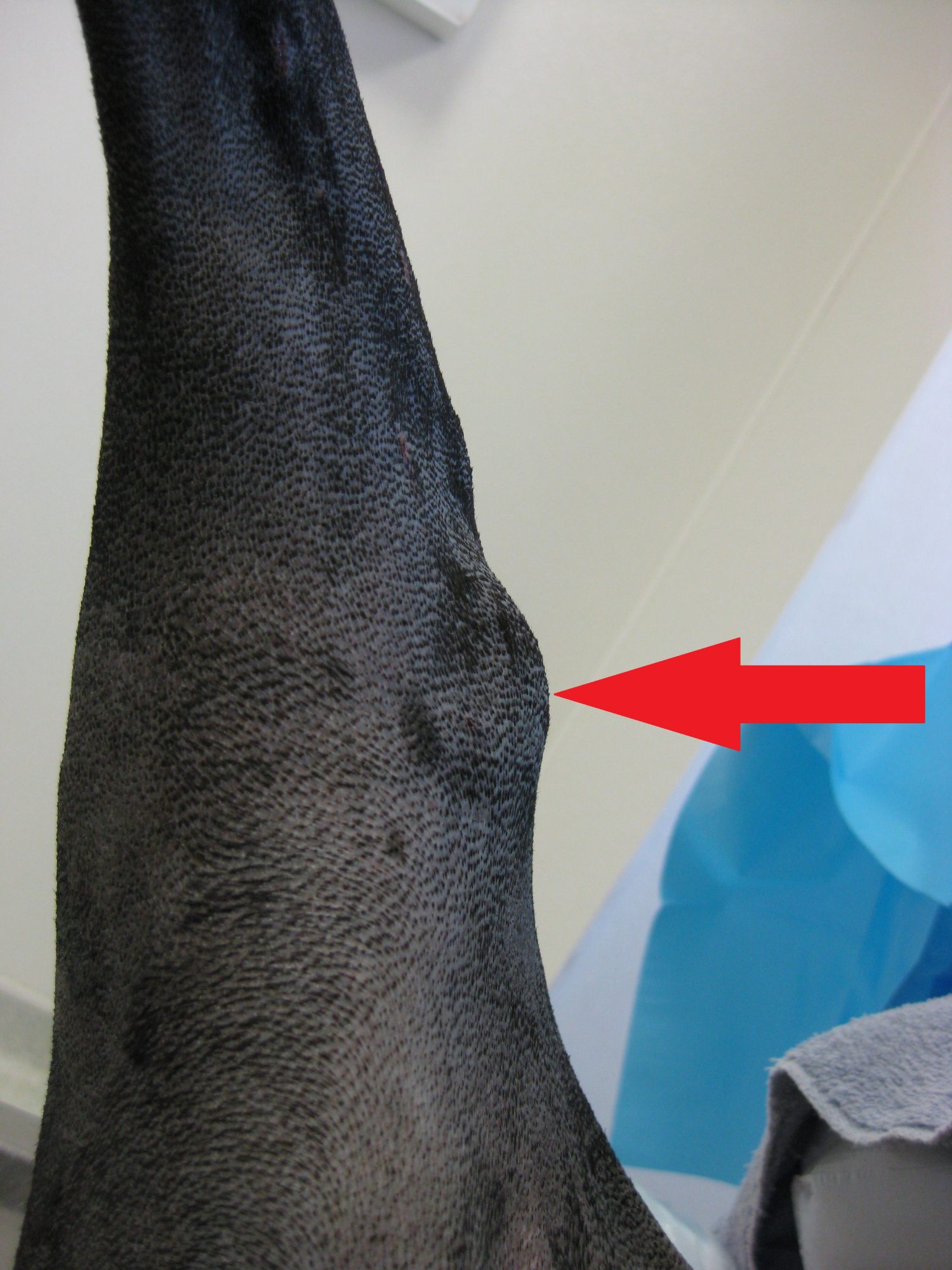
In turn, scar tissue leads to our next point.
4. Decreased range of motion
A long-term consequence of arthritis and scar tissue is a decreased range of motion of the knee.
Patients with older (chronic) ACL tears commonly experience a decreased range of motion. This might not matter much to a couch potato, but it will affect the performance of an active family pet or a working dog.
5. Muscle atrophy
Patients who favor a hind leg classically show various degrees of muscle atrophy because of poor use of the leg.
This can be assessed easily by measuring the circumference of the thigh with a simple tape measure.
6. Exercise intolerance
Obviously, a family pet or working dog will have a tough time running around with a sore knee.
Dogs with a torn ACL are reluctant to play or go for walks. Exercise intolerance or poor athletic performance classically leads to weight gain, because these pets often receive the same amount of food (and sometimes more, along with more treats).

7. Weight gain
A consequence of many of the above changes is decreased activity, which invariably causes weight gain.
This is a common observation in ACL patients. Unless you decrease your pet’s food intake to match the decrease in activity, weight gain is inevitable.
8. Opposite ACL tear
Arguably, weight shifting may lead to a tear of the opposite ACL. While this might be manageable in a yorkie or a cocker, it becomes a much bigger problem with a Labrador or a mastiff. Helping a 100 lb dog who has both ACLs torn at the same time is not easy!
9. Tear of the meniscus
Instability in the knee can lead to a tear of the meniscus (see picture below), which is a pad of cartilage in the knee. This can cause even more pain.
On the opposite, once the knee is stabilized, the risk of a tear of the meniscus is minimized.
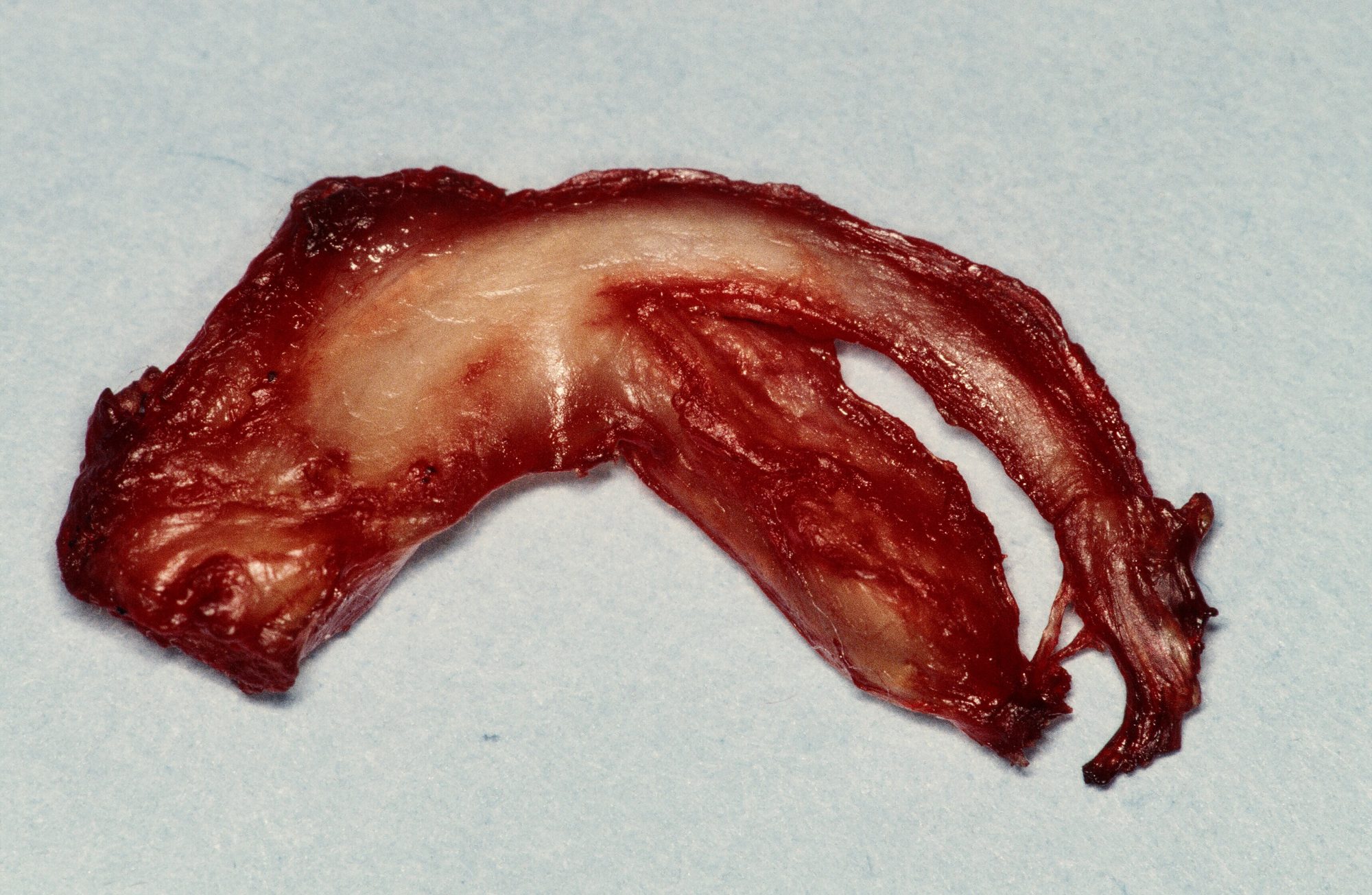
10. Distant problems
The changes in gait and posture can affect all three other legs, as well as the spine. Weight shifting may cause or exacerbate an orthopedic problem in another leg.
A doggie physical therapist told me once: “An ACL rupture is the beginning of a cascade of events in other body parts – joints, muscles – that we can’t forget.”
To a degree, some of the above changes can be used to “date” an ACL tear. From experience:
. A patient with a recent ACL tear classically is lame and painful.
A patient with an old (chronic) ACL tear typically presents with limping, pain, arthritis, decreased range of motion, muscle atrophy and weight gain. In surgery, we certainly see much more bone spurs in a dog with a chronic tear than with a recent tear.
From a surgeon’s standpoint, an ACL tear is a very fixable problem.
Sure, it is possible to live with a torn ACL. Certainly, it might be the only option if you absolutely cannot afford surgery.
ACL surgery has changed dramatically over the past few years. I now expect a return of at least 95 % of normal function in at least 95 % of my patients of any size after ACL surgery, of any type.
So it’s hard for me to believe that affected dogs, especially large ones, have (and will have) a good quality of life with an untreated ACL tear.
Phil Zeltzman, DVM, DACVS, CVJ, Fear Free Certified

Dr. Phil Zeltzman is a traveling veterinary surgeon in Pennsylvania & New Jersey. An award-winning author, he loves to share his adventures in practice along with information about vet medicine and surgery that can really help your pets. Dr. Zeltzman specializes in orthopedic, neurologic, cancer, and soft tissue surgeries for dogs, cats, and small exotics. By working with local family vets, he offers the best surgical care, safest anesthesia, and utmost pain management to all his patients. Sign up to get an email when he updates his blog, and follow him on Facebook, too!
Puppy Magic, my biggest ethical dilemma of 2020
Puppy Magic, a now 13 year old Labrador, never knew that he was my biggest ethical dilemma last year. He has a very interesting story and a long journey…
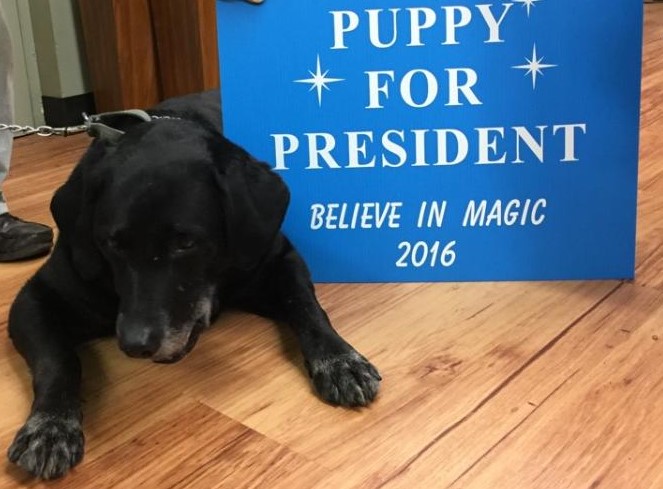
In June of 2019, Puppy Magic had a TPLO to treat a tear of his left ACL. This is my most common surgery by far, so it was supposed to be straightforward. But when a nurse placed a tube in Puppy’s windpipe at the beginning of anesthesia, a mass was noticed in the very back of his mouth. A biopsy of the mass was sent to the lab. The TPLO surgery went well and Puppy went home smoothly.
A week later, the biopsy returned as a malignant melanoma, an aggressive type of cancer.
You could say that it was an accident that the nurse noticed the mass. I firmly believe that it was not. It was found because of the attention to detail and experience of the anesthesia nurse. Not only did she notice the mass, but she alerted her vet who acted on it.
Puppy’s very dedicated owner, thankful that the cancer was caught so early, went to consult with a cancer specialist (oncologist). Incredibly, melanoma can be treated with a vaccine in dogs. Puppy responded well to the treatment and went into remission.
Over a year later, Puppy Magic was taken to the ER because of a limp in the right back leg. A torn ACL was diagnosed – again. In addition, Puppy Magic showed signs of laryngeal paralysis, i.e. difficulty breathing. The ER doctor told the owner that he didn’t recommend addressing the ACL tear or the breathing difficulty in a dog with oral cancer.
When I heard about it, that put me in a very delicate situation.
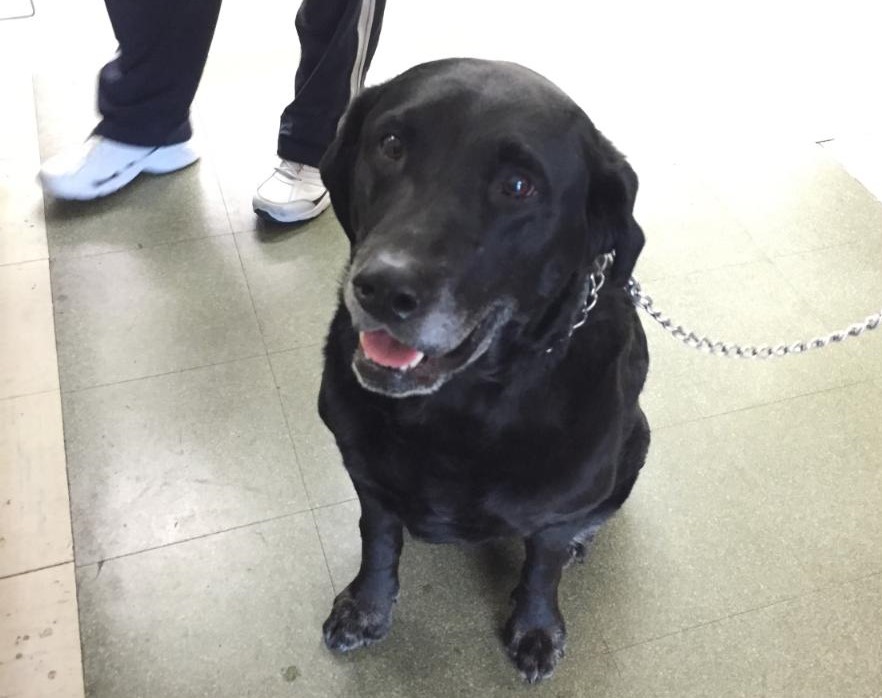
What was I supposed to do?
Say nothing, and allow my patient to suffer from his painful knee, and suffocate because of the laryngeal paralysis?
Or keep my opinion to myself, rather than going against a colleague’s advice?
After a week of mulling over this ethical dilemma, I gathered enough courage to call the owner. I was extremely hesitant. Was this even ethical?
I was convinced that I could help Puppy Magic, but what if something went wrong?
So we had a candid conversation. We discussed the facts. We weighed the pros and the cons. I very clearly explained the possible complications.
In the end, only Puppy Magic’s owner could make the final decision.
The additional difficulty was to decide which surgery to do first: the TPLO or the laryngeal paralysis surgery. Arguments could made either way…
After thinking about it, Puppy’s owner decided to take a chance, and put his dog’s future in my hands…
That’s a lot of pressure…
We eventually both agreed to start with the TPLO.
So in September of 2020, we did another TPLO, this time on the right knee.
Fortunately, thanks to the TLC and dedication of his owner, Puppy recovered smoothly.
Then in December of 2020, we did surgery to treat the laryngeal paralysis.
But wait, there’s more!
During his recovery, Puppy started to limp on the right FRONT leg. His family vet noticed some swelling of one of his toes. Long story short, there was a strong suspicion of cancer.
On the X-ray below, you can see 4 normal toe and 1 very swollen toe on the left (red arrow)…
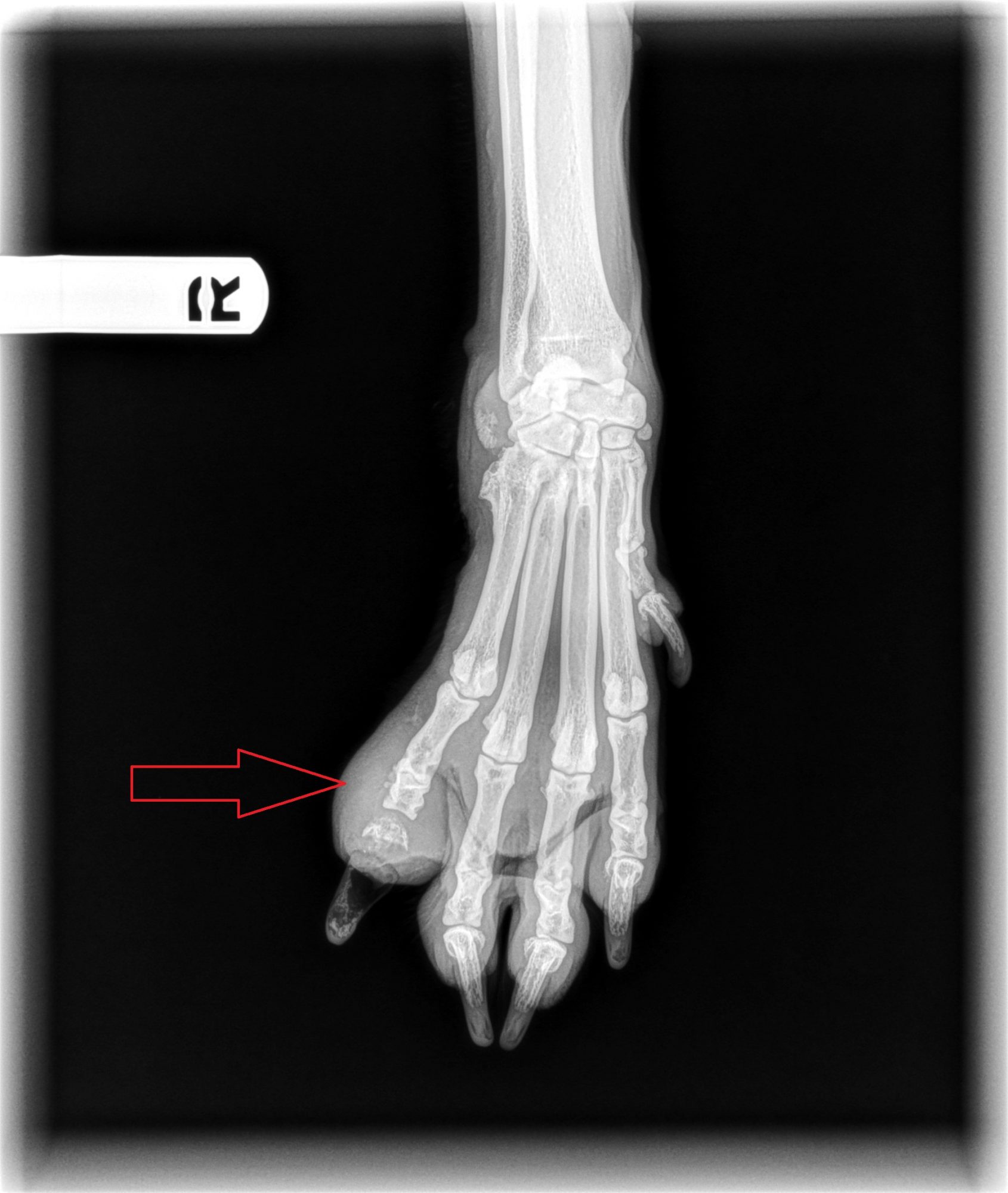
So here we went for yet another dilemma… Was it fair to do surgery? Was it ethical? When do we stop? What would you have done?
Again, Puppy Magic’s owner decided to give his pup a chance, and chose to go to surgery.
So, even though the clinic was in the middle of a giant snowstorm, we performed surgery to treat the laryngeal paralysis and amputated the toe.
Laryngeal paralysis causes difficult and noisy breathing.
The very next day after surgery, not quite used to the new situation, the owner wrote: “Breathing is good. I have to check Puppy’s stomach to see if he is breathing!”
That certainly was a good start!
One week after surgery: “He is walking much better – he has not walked this well in over 5 months.”
In addition, “Puppy is doing some good things he has not done in a while – like going into the kitchen to eat. His foot hurt too much before to do that.”
It’s the little things…
Sadly, 10 days after surgery, the diagnosis of cancer in the toe (squamous cell carcinoma) was confirmed. Fortunately, the cancer was removed 100%.
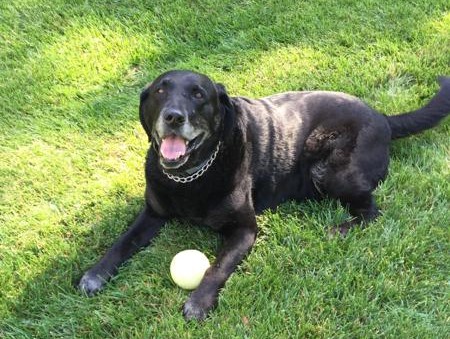
Two months after surgery, Puppy was finally done with healing. He was breathing well, wagging his tail, eating and drinking well, playful, eager to go on walks, and happy to be alive.
His owner concludes: “Puppy is doing great after his 4 surgeries. He has a great love of life and enjoys each moment.”
This story shows that when a family vet, a surgeon and a unusually dedicated pet owner work together, have open communication and trust each other, tricky situations, including cancer, can have a good outcome.
As of this writing, 6 months after his 4th surgery, Puppy Magic is still doing great.
Phil Zeltzman, DVM, DACVS, CVJ, Dear Free Certified

Dr. Phil Zeltzman is a traveling veterinary surgeon in Pennsylvania & New Jersey. An award-winning author, he loves to share his adventures in practice along with information about vet medicine and surgery that can really help your pets. Dr. Zeltzman specializes in orthopedic, neurologic, cancer, and soft tissue surgeries for dogs, cats, and small exotics. By working with local family vets, he offers the best surgical care, safest anesthesia, and utmost pain management to all his patients. Sign up to get an email when he updates his blog, and follow him on Facebook, too!
How Nestle’s leg almost got amputated
Nestle, a 6 year old pit bull, started limping on her left hind leg. Her owner took her to her family vet to figure out what was wrong.
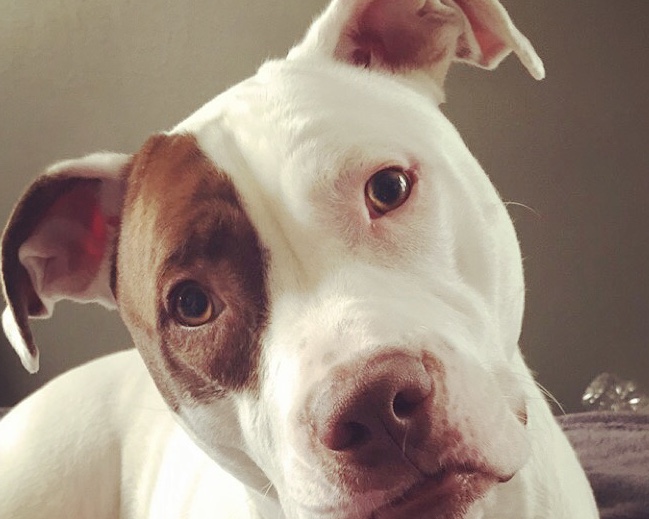
The vet took one X-ray of the leg and gave the owner some devastating news: Nestle had bone cancer – most likely osteosarcoma. He recommended that she been seen by a surgeon to discuss what options were available.
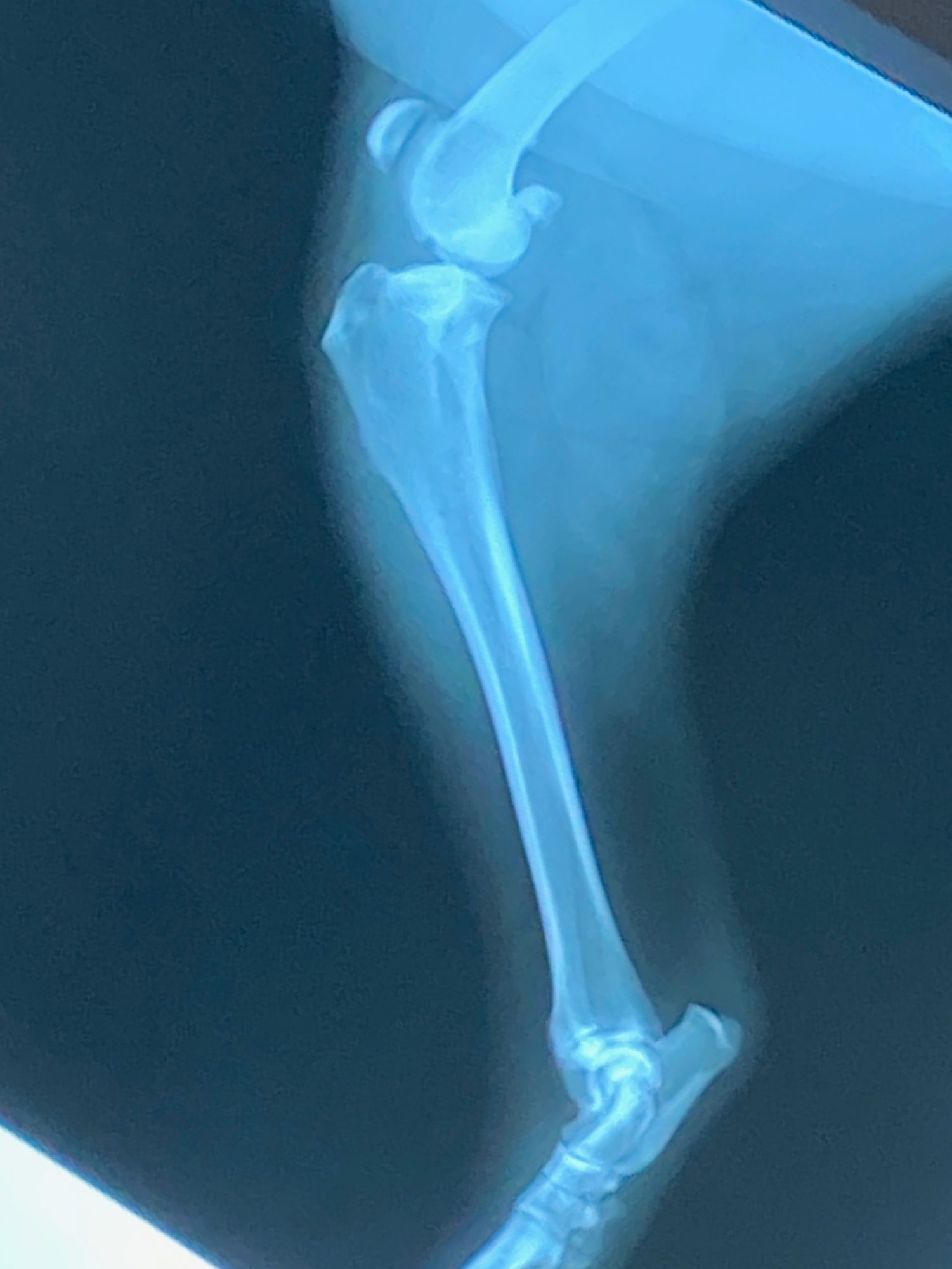
Nestle’s dedicated owner immediately took her to see the surgeon. He reviewed the X-ray taken by the family vet and agreed with the diagnosis. Then he recommended to take her to surgery right away to have her leg amputated. Amputation is indeed the standard of care for bone cancer.
But Nestle’s owner didn’t feel right about the whole situation. He couldn’t explain it. It just didn’t sit right with him. “I knew we had to get a second opinion. When I looked at Nestle, something just told me I wasn’t getting the most accurate information.”
Trusting his gut, he reached out to me for a second opinion about his dog’s unfortunate situation. I asked him to send me the X-ray his vet had taken for me to review. After looking it over thoroughly, and with all due respect, I didn’t see anything convincing on the X-ray.
That put me in a diplomatically tricky position…
I told him that I would not feel comfortable amputating Nestle based on that X-ray only.
Instead, I recommended doing a full “workup” – by the book.
X-rays of the bone in question, in addition to the knees and the hips to be thorough. I also recommended chest X-rays since bone cancer readily spreads to the lungs. And full blood work for good measure, to make sure Nestle was a good candidate for anesthesia.
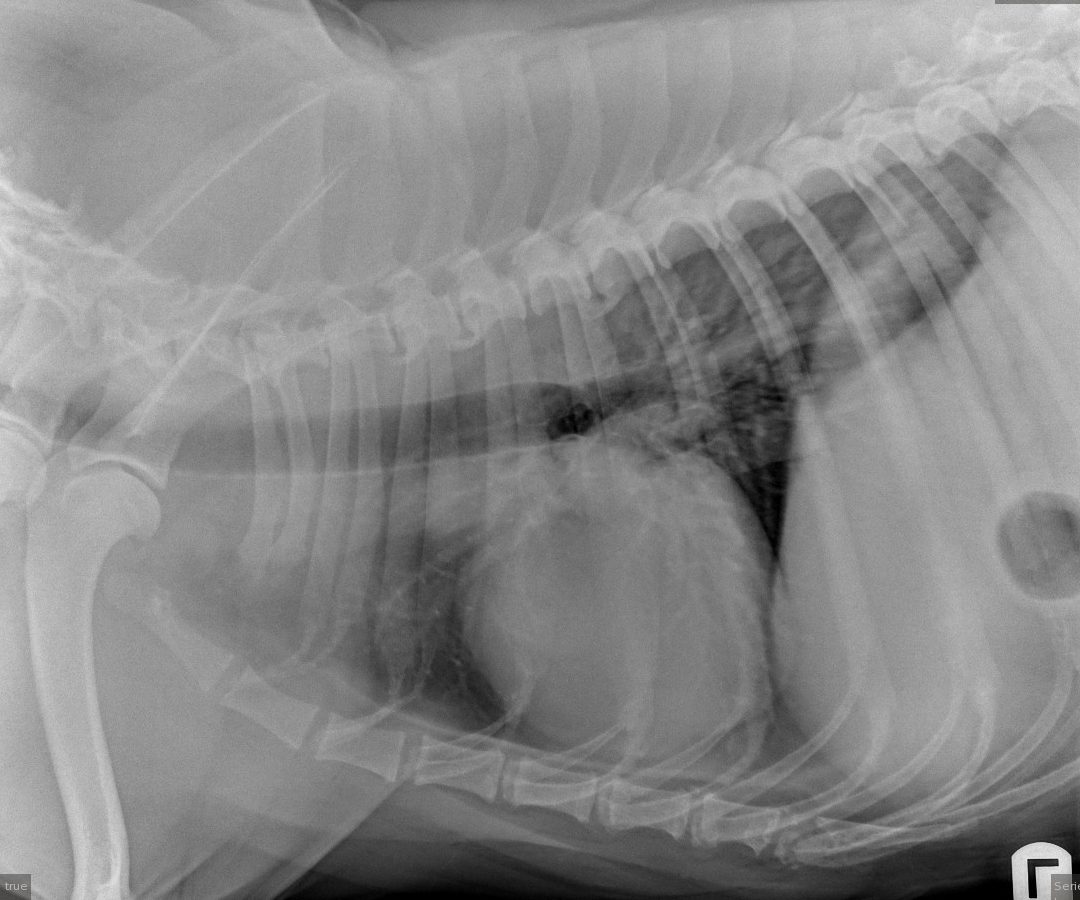
That was a big leap of faith, and a significant expense, but Nestle’s owner trusted me enough to follow my advice.
Once I received the X-rays from the clinic I referred him to, there was no question in my mind. Nestle did not have bone cancer. To be extra safe, I even emailed the X-rays to several surgeon friends. They all agreed with my opinion: no sign of bone cancer.
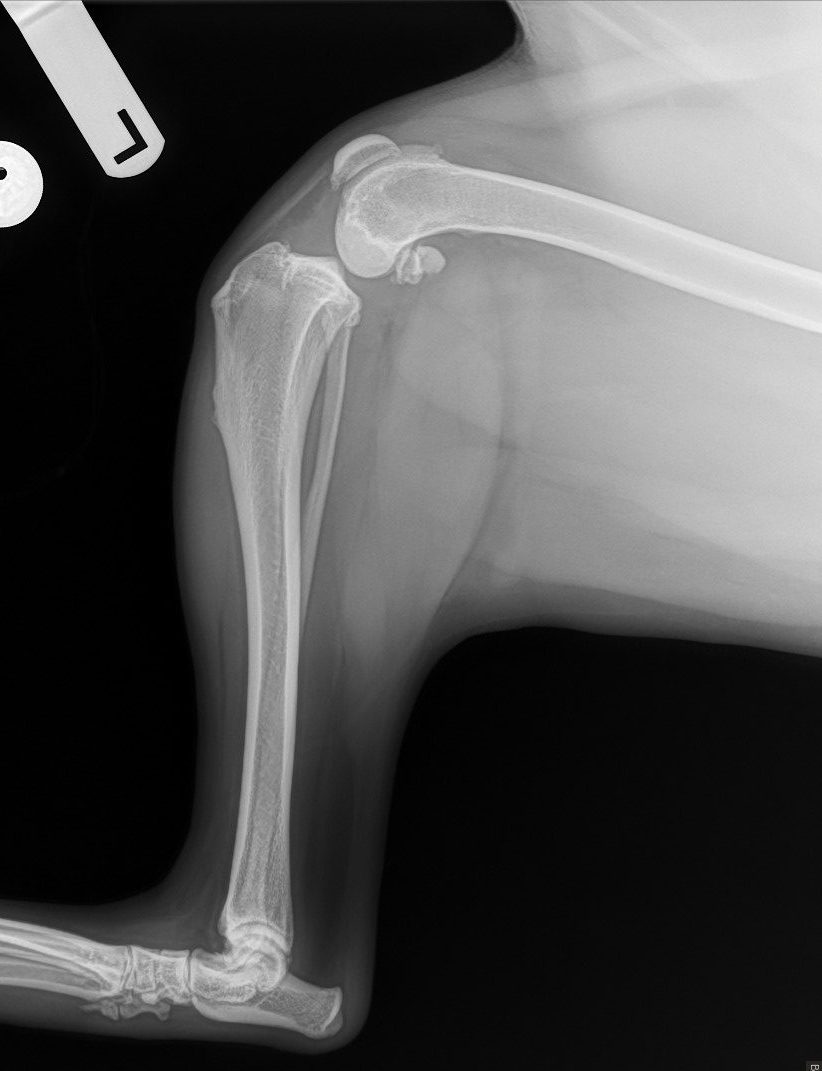
So what did Nestle have? A torn ACL.
Rather than an amputation, she needed a TPLO (Tibial Plateau Leveling Osteotomy).
Both happy and a bit uneasy (i.e. going against a family vet’s and another surgeon’s opinion), I delivered the news to Nestle’s owner. He was beyond grateful for the amazing news.
Can you imagine the emotional roller coaster?
We set up surgery for her TPLO procedure the following week. She had a successful surgery and recovered uneventfully.
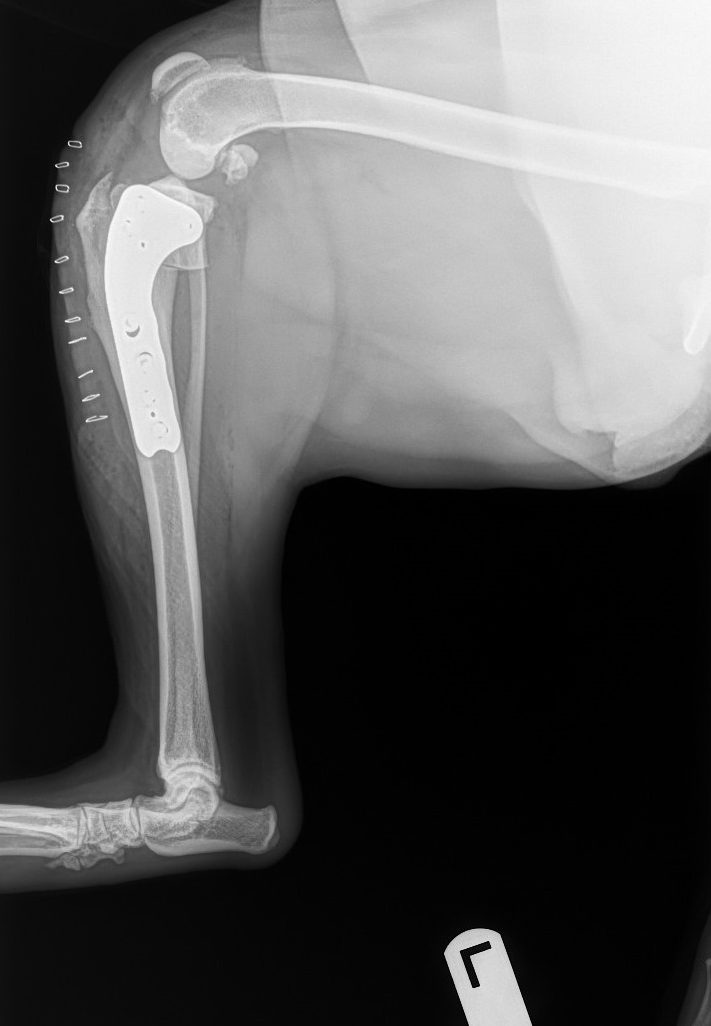
The owner and his family were so happy. They were relieved that they trusted their gut and pursued a second opinion for their dog.
What’s the moral of the story? My point is certainly not to pretend that I am smarter than the other surgeon.
Here are a few points to never forget if you get in a similar situation:
. A thorough vet will always do specific things rather than cut corners. For example, we almost always need “2 views” or 2 X-rays, to get a better idea of the anatomy in 3D: one from the front and one from the side. Nestle’s vet, with all due respect, only took a view from the side. I always ask for “2 views” of the bone.
. When cancer is suspected, we usually take chest X-rays to make sure the cancer hasn’t spread to the lung (I say usually because in some cases we need to look inside the belly for spreading). Can you imagine amputating a dog’s leg, and then later realizing that the lungs are full of metastasis?
Incidentally, a thorough vet will take not 2 but 3 views of the chest: one of the front, and one from each side. Again, don’t cut corners.
. And of course, we always perform full blood work before putting a patient under anesthesia, to ensure they are a good candidate, ie internal organs such as the kidneys and the liver, are healthy enough.
. And here is my final and most important point: whenever something doesn’t seem or feel right about a practice, a vet or a treatment recommendation, you should trust your gut. It is your absolute right to get a second opinion if you aren’t comfortable.
You should never feel embarrassed or ashamed to seek a second opinion. You need to be your pet’s best advocate.
The diagnosis and the outcome may not be any different, but at least you can rest assured that you will make the best possible decision for your pet.
“The initial thought of losing Nestle to bone cancer absolutely crushed my family and I. Nestle is a rescue & since the day I rescued her, I vowed to do everything in my power to keep her safe and comfortable throughout her life after a rough beginning. After her initial diagnosis, I felt like I had failed her. But there was something about Nestle’s demeanor, I can’t explain it, I knew there was more to the initial diagnosis. And I knew I wanted a second opinion, especially after such a serious diagnosis.”
And he concludes:
“Without a doubt, Dr. Zeltzman and the staff at the clinic changed Nestle‘s life for the absolute best, and they gave me back my best friend when I thought I’d lost her for good.”
Phil Zeltzman, DVM, DACVS, CVJ, Fear Free certified

Dr. Phil Zeltzman is a traveling veterinary surgeon in Pennsylvania & New Jersey. An award-winning author, he loves to share his adventures in practice along with information about vet medicine and surgery that can really help your pets. Dr. Zeltzman specializes in orthopedic, neurologic, cancer, and soft tissue surgeries for dogs, cats, and small exotics. By working with local family vets, he offers the best surgical care, safest anesthesia, and utmost pain management to all his patients. Sign up to get an email when he updates his blog, and follow him on Facebook, too!
A great way to cope with losing a pet
Broadway, a sweet 4 year old Lab, had TPLO surgery to address a torn right ACL in February of 2016. Then another TPLO on his left knee in October 2016. Both times, he recovered well.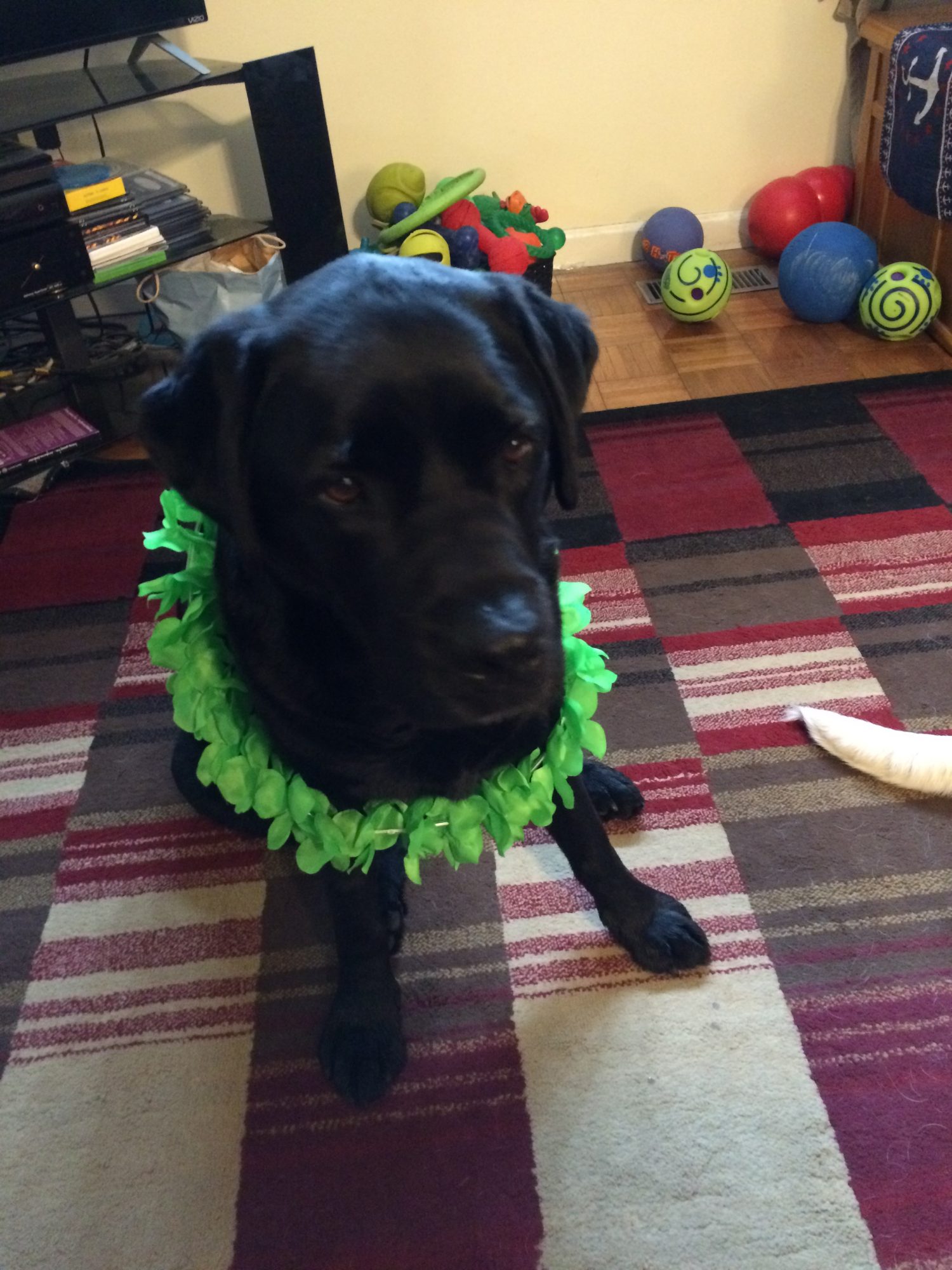
Then weird things started to happen: strange breathing, regurgitation (which is different from vomiting) and back leg weakness. Early signs of laryngeal paralysis and GOLPP (Geriatric Onset Laryngeal Paralysis Polyneuropathy) were suspected. Until things started to get worse. His quality of life deteriorated progressively.
After consulting with several specialists (in surgery and neurology), his incredibly loving and unusually dedicated owners reluctantly decided to humanely put him to sleep on May 25th, 2017.
Broadway’s owner wrote:
“Words cannot begin to express the loss I feel in my hear and in our home. To the amazing staff at the Animal Therapy Center; our committed and compassionate staff at HanoverView Animal Hospital, and Broadway’s devoted, caring and patient surgeon Dr. Phil Zeltzman; we are thankful and blessed that Broadway was cared for by each of you and extremely grateful for all of your help during this past year and most importantly during the last few months.
May he always know how very much he was, and remains, loved and that I would have gone to the ends of the earth if it meant he could have recovered and lived a long, healthy life. Until I see him again….”
The story could stop here.
So to cope with the grieving process, Broadway’s owner had a brilliant idea you may want to remember when you’re in a similar situation. She created a beautiful video collage to honor her best friend’s life. It’s long, but every picture exudes love, and the end is priceless. Grab a box of tissues before you click!

Dr. Phil Zeltzman is a traveling veterinary surgeon in Pennsylvania & New Jersey. An award-winning author, he loves to share his adventures in practice along with information about vet medicine and surgery that can really help your pets. Dr. Zeltzman specializes in orthopedic, neurologic, cancer, and soft tissue surgeries for dogs, cats, and small exotics. By working with local family vets, he offers the best surgical care, safest anesthesia, and utmost pain management to all his patients. Sign up to get an email when he updates his blog, and follow him on Facebook, too!

